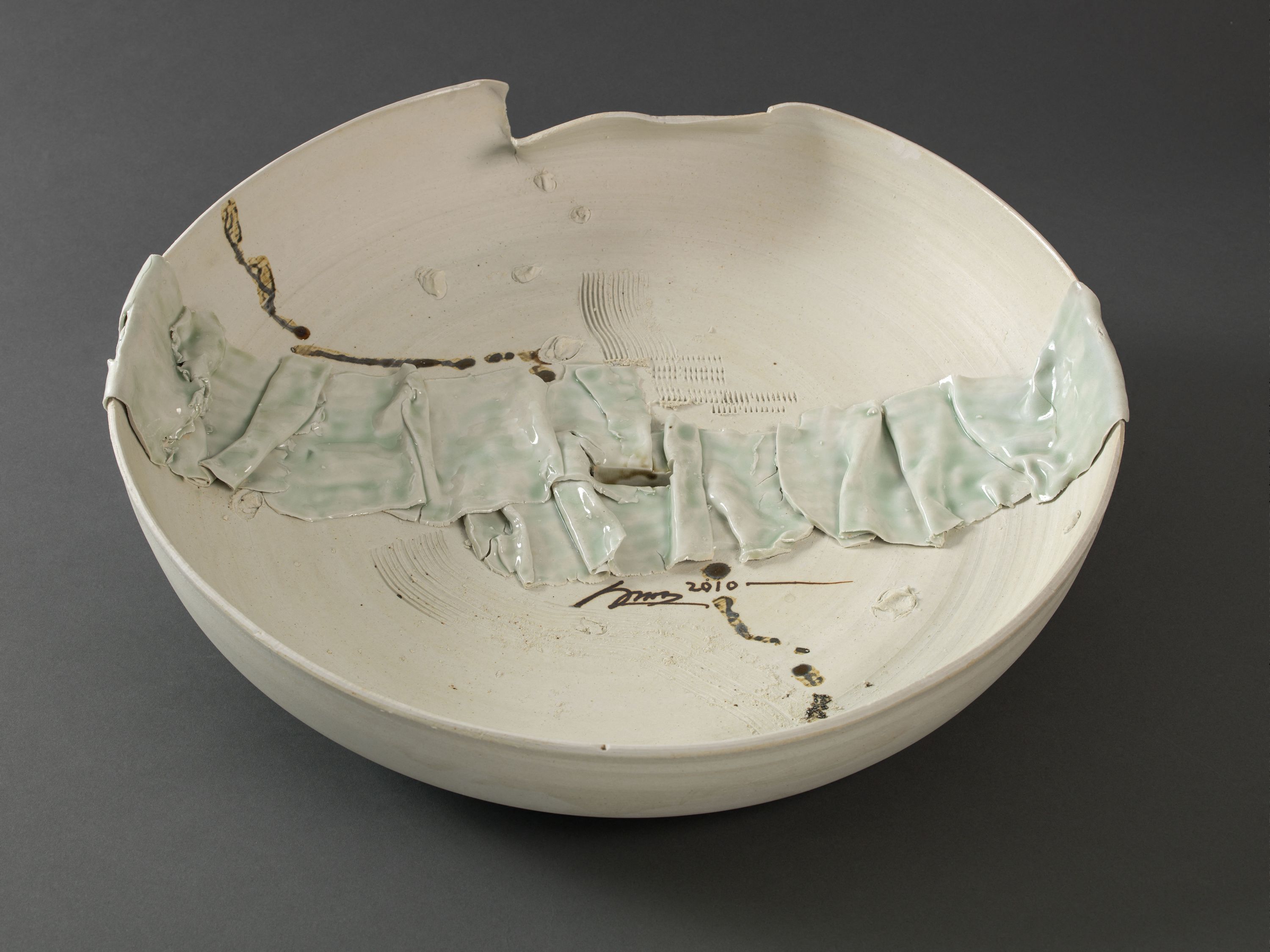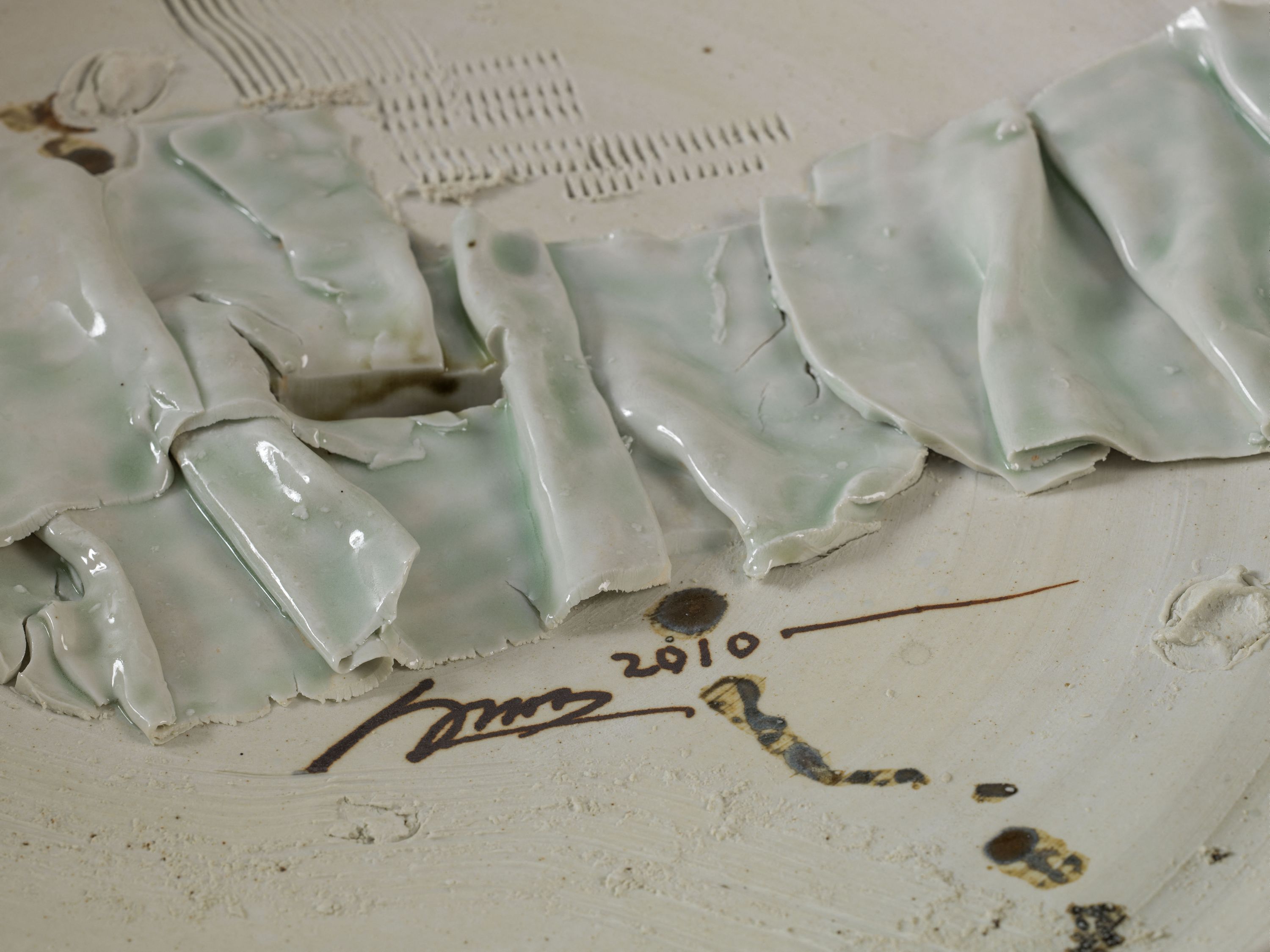
La plus grande perfection semble incomplète II
Biscuit, Email (technique céramique), Porcelaine, Glaçure = Couverte
Plat
Don manuel : Bai, Ming 白明
M.C. 2014-7
Bai Ming is a leading figure of the current renewal of ceramic art in China and one of the artists developing a new synthesis of Chinese tradition and modernity, once again a major issue in the Chinese art scene. A native of Yugan in Jiangxi, some 100 kilometres from Jingdezhen, he graduated in 1994 from the Academy of Arts and Design at Tsinghua University in Beijing, one of the most reputed in China. He teaches there today, which has heightened his influence on the Chinese art scene.
His work, since his earliest ceramics, can be divided into two main trends. On the one hand, he makes porcelains whose silhouette and decoration draw on a long tradition of Oriental ceramics, be it Chinese or Japanese. He reappropriates the technical perfection of the Jingdezhen workshops, certain ancient forms and the common use of underglaze blue or red for decoration. However, their changes of scale, adaptation of vessel types, arrangement of the ornamentation, strikingly visual quality and use of stylised and fragmentary natural motifs, for their decorativeness, profoundly renew the Chinese ceramic tradition.
On the other hand, a considerable proportion of his works relate to a current that conceives ceramics as a sculptural material. Bai Ming’s work is characterised by his very narrow rapport with tradition. Most of his sculptural ceramics reflect a refusal to completely abandon figurative, customary and even functional forms. Yet these are negated by the complexity of the techniques employed, by the assertive contrast of the decorations and textures and by the distortions they have undergone. Their resulting fragile appearance, combined with the use of types of glaze and enamels from the great history of the Jingdezhen kilns, is a reminder that one of the major subjects explored in Bai Ming’s work is an equivocal relationship with time and tradition.




